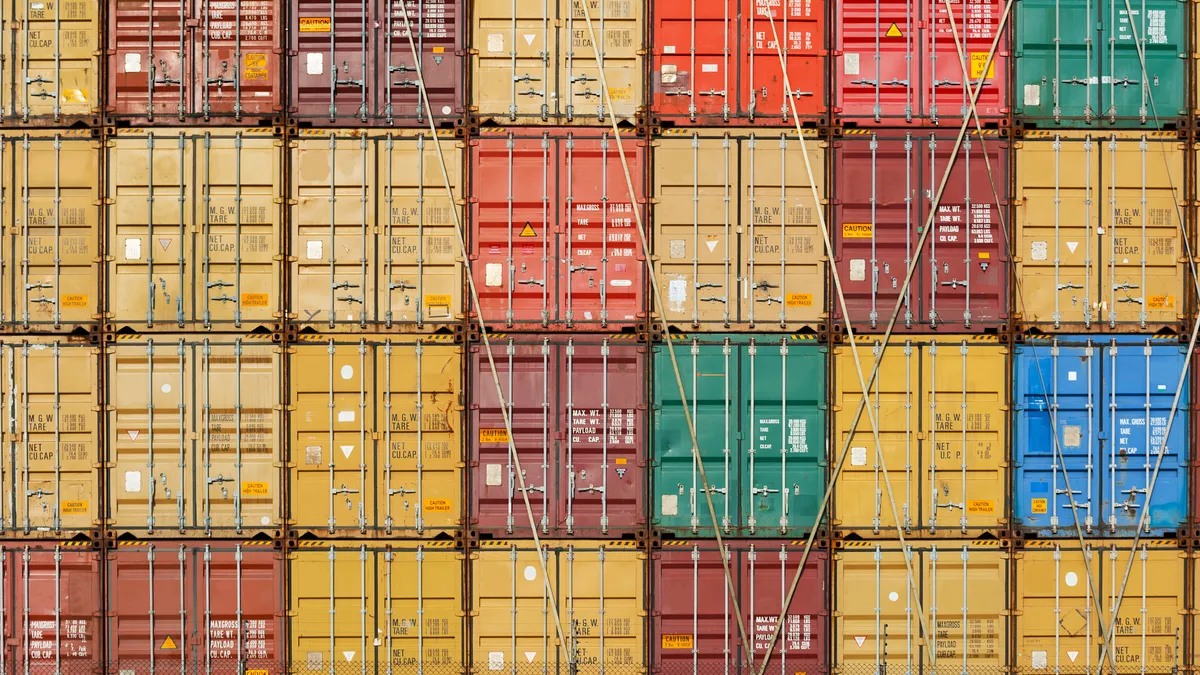Dive Brief:
- U.S. retail container imports were up 8.8% in December over November — down from the peak last fall but still higher than normal — as the tariff increase on goods from China looms, according to the latest Global Port Tracker report from the National Retail Federation (NRF) and Hackett Associates.
- Overall, 2018 experienced a record 21.8 million TEU, an increase of 6.2% over the 2017 record of 20.5 million TEU. Estimates for the first half of 2019 predict volumes will rise 4.1% over the first half of 2018.
- Retailers have accelerated imports to beat the March 1 deadline when U.S. tariffs on $200 billion worth of Chinese goods will increase from 10% to 25%, unless negotiations are successful.
Dive Insight:
Talks began in December to resolve the trade dispute, but retailers have been preparing for higher costs on imports since last year, according to NRF.
“With trade talks with China still unresolved, retailers appear to be bringing spring merchandise into the country early in case tariffs go up in March,” said Jonathan Gold, vice president for supply chain and customs policy. “We are hopeful that the talks will succeed, but until the trade war is behind us, retailers need to do what they can to mitigate the higher prices that will inevitably come with tariffs.”
The Globe Tracker Report covers the U.S. ports of Los Angeles/Long Beach, Oakland, Seattle and Tacoma on the West Coast; New York/New Jersey, Port of Virginia, Charleston, Savannah, Port Everglades, Miami and Jacksonville on the East Coast, and Houston on the Gulf Coast.
Retailers may be doing their best to ensure stocked shelves, but a side effect of robust imports is a shortage of space in warehouse and storage facilities. Available U.S. warehousing and logistics space sits at a multiyear low, according to real estate researcher CBRE Group. In the fourth quarter of 2018, availability for industrial real estate fell to its lowest level since 2000.
To make do, companies and warehouse providers are scrambling for creative solutions like short-term storage trailers and digital marketplaces for warehouse space.
Retail products are not the only commodities surging ahead of the tariffs. According to BIMCO analysis of USDA figures, 754,609 metric tons of soybeans were ready to be shipped to China in January, compared to 25,347 metric tons in December.













